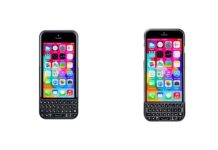I’ve been thinking about all of the items that were announced at Apple’s September Event and while the iPod touch’s upgrade to basically become the iPhone minus the phone, and the completely redesigned iPod nano are fantastic, the Apple TV may end up being the big winner out of the bunch.
The Apple TV 2.0 has been completely redesigned to be smaller, streaming only, and cheaper. The original Apple TV had a form factor similar to the Mac Mini, only a big longer and wider, and yet shorter. This has been miniaturized down from 7.7″ x 7.7″ x 1.1″ high down to 3.9″ x 3.9″ by 0.9″ high. This is a major reduction in the footprint of the Apple TV. The old form factor worked well given the number of jacks provided in the back for hooking up to your entertainment center.
Despite this myriad of choices, for most users the number of choices can prove to be confusing, particularly when a user wants 5.1 audio but they are using component cables. They would then have to add a TOS link in as well, and this setup would be less than ideal. At the initial introduction of Apple TV, back in September of 2006, component was the primary way many users would connect devices to their televisions; this just isn’t the case today.
The Apple TV 2.0 removes the choice and only provides a single HDMI cable, as well as optical audio and an ethernet connection. The new Apple TV 2.0 also removes the storage capability and provides only streaming via the iTunes store. With the removal of the native storage, syncing also disappears, making it easier for non-techies to figure out the device. Removing the component ports and storage is what has allowed the overall size of the device to be reduced.
In addition to reducing the physical footprint by about 50%, the power usage has dropped dramatically. The original Apple TV had a built-in 48 watt power supply. The Apple TV 2.0 has a 6 watt power supply. This new power supply uses only 12.5% of the power of the original Apple TV. The power supply and footprint are the only two things that saw huge reductions. The price also saw a 57% reduction in price, from $229 to $99. The $99 price is a major factor for many. It’s a psychological barrier that makes many truly look at the device.
The biggest change, and what could potentially be the most noteworthy feature, is the fact that Apple chose to use their A4 chip within the Apple TV 2.0. This opens a whole slew of possibilities. The most hoped for, by the geeks anyway, is the possible addition of applications at some point in the future. The applications would be dependent on the device running a modified version of iOS, which is an unknown at this moment. I sense some hacking that is going to occur when the device is released.
The last, and possibly biggest allure for some, is the inclusion of Netflix streaming within the device. Sure, there are other devices that include Netflix streaming. This includes, but is no where limited to, the Xbox 360, the Playstation 3, the Wii, Roku, Tivo, and a slew of others. But the one thing that the Apple TV 2.0 has going for it is that the device is also compatible with iTunes. As Steve Jobs mentioned in the presentation, there are 160 Million iTunes accounts with credit cards. This is a potentially massive audience that could want to easily hookup a device to their television to create a media center without having to learn 3 different interfaces.
There is one drawback, as far as I can see — the lack of inclusion of a gigabit adapter. I know this should not affect anything, but the standard is to include gigabit in everything. No, gigabit is not required for streaming via Netflix, nor can the Apple TV actually handle anything above 35Mbps, but it is just the idea that in order to stream super hi-def video at some point we will need more than 100 Mbps. I’m just surprised that Apple wasn’t willing to spend the extra $0.25 on the gigabit adapter.
Overall, the Apple TV looks to be a contender. The price point along with the streaming only and removal of some of the complications makes this new Apple TV a device to watch. It may not become huge like the Tivo or Xbox 360, but it is definitely something to keep an eye on, because you never really know what might happen.
Image credits: Apple, CJSorg, and OldMaison.






